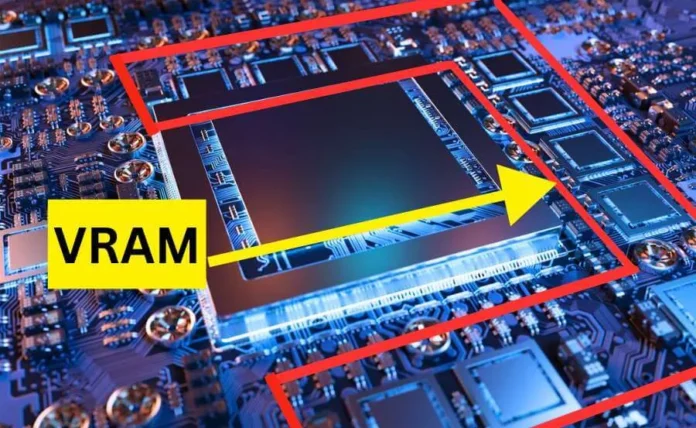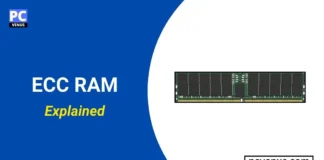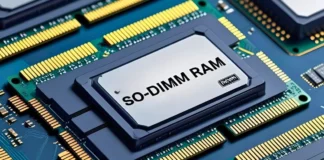If you’re a gaming enthusiast or someone who works extensively with graphics and visual content, you’ve likely come across the term VRAM.
But what exactly is VRAM? And why is it so crucial for certain tasks?
This article is your ultimate guide to VRAM, covering everything from its definition to its various applications and how it affects your overall computing experience.
What is VRAM?
VRAM, which stands for Video Random Access Memory, is a special type of memory found in graphics cards or GPUs. These graphics cards are like little components inside your computer that handle all the visuals you see on your screen, like games, videos, and pictures.
Now, regular computer memory is called RAM, and it helps your computer run programs and store data temporarily. But VRAM is different. It’s exclusively used for handling and storing graphics-related stuff.
Think of VRAM as a super-fast and dedicated storage area just for pictures and videos. It helps the graphics card work quickly and efficiently, so you get smooth and nice-looking visuals on your screen.
Types
GDDR5 (Graphics Double Data Rate 5): This type of VRAM was widely used in mid-range to high-end graphics cards. It offered relatively fast data transfer rates and was popular during its time.
GDDR6 (Graphics Double Data Rate 6): GDDR6 is an improved version of GDDR5, providing even faster data transfer rates and increased bandwidth. It became more prevalent in high-performance graphics cards as it offered better performance and efficiency.
GDDR6X (Graphics Double Data Rate 6X): GDDR6X is an iteration of GDDR6 and offers higher data transfer rates compared to its predecessor. It was introduced in some of the top-tier graphics cards to handle demanding tasks such as high-resolution gaming and real-time ray tracing.
Also Read: How to Write Emails Using Google Bard?
History
In the old days of computers, they used expensive and fast memory to show pictures on the screen. But as technology improved, they found a cheaper type of memory called DRAM.
DRAM was a bit slower, but they made special graphics controllers to help it work well for graphics.
Then came the cool thing called Dual-Port VRAM. It had two doors that the graphics part and the display part could use at the same time. This made things much faster and improved graphics performance.
After that, they introduced Multiport VRAM and SGRAM.
Multiport VRAM had even more doors, which meant even better graphics performance.
SGRAM was like a smart version of VRAM that could talk to the computer’s graphics card more efficiently.
Next up was DDR VRAM. It was like the DDR memory used in computers but tweaked for graphics. DDR VRAM was faster, making graphics look smoother and better.
Around the 2000s, GDDR VRAM became the standard. It was an improved version of DDR VRAM, and it kept getting better with different generations like GDDR2, GDDR3, and so on.
GDDR VRAM was perfect for graphics cards and made video games and other graphics-heavy tasks work really well.
Also Read: How to Free up Space on Windows
How VRAM work?
Your computer’s graphics card is like a painter. It makes things on your screen look good. VRAM is where the painter keeps its paints and brushes.
The painter (graphics card) has to work fast to make things look smooth. VRAM is a fast box that has the paints and brushes the painter needs.
VRAM is very powerful. It can do many things at the same time. It can use many paints and brushes together, making everything fast and smooth.
When you play games or use special apps, the painter (graphics card) uses the paints and brushes from VRAM and makes beautiful pictures on your screen. It is like magic.
VRAM also helps with videos. It has video stuff and helps the painter (graphics card) show the pictures in videos very fast, so you can watch without any trouble.
Another thing VRAM does is make 3D things look real. It has special paints and brushes for 3D things and helps the painter (graphics card) use them on things, so they look cool and real.
Advantages of VRAM
High Bandwidth
VRAM lets the graphics card access lots of graphical data quickly. This is important for making sure graphics appear smoothly and in real-time when using programs that need a lot of graphics power.
Dedicated Graphics Memory
VRAM is separate from your computer’s regular memory (RAM). This means the graphics card can focus solely on handling graphical tasks without slowing down other parts of your computer.
Fast Data Transfer
VRAM is built to move data around quickly, which is crucial for showing complex 2D and 3D graphics without any lag.
Parallel Access
VRAM has many parts that can work together at the same time, allowing the graphics card to process data faster. This is especially helpful when dealing with large images and high-resolution displays.
Low Latency
VRAM helps the graphics card fetch data quickly. Lower latency means graphics can be shown faster, leading to better performance.
Large Memory Capacity
Graphics cards have different amounts of VRAM, usually from 2GB to 16GB or more in powerful ones. More VRAM is needed for better graphics quality and to run modern games smoothly.
Texture Compression
Some VRAM technologies can compress textures, making them use less memory without losing much image quality. This saves VRAM and boosts performance.
Refresh Rate Support
VRAM helps support higher refresh rates on your monitor, especially if you have multiple high-resolution screens.
Heat Management
VRAM chips are made to handle the heat generated during graphics processing. Graphics cards usually have special cooling to keep the GPU and VRAM at the right temperature.
Limitation of VRAM
Not Enough Space
Some graphics cards have less VRAM, which can make it hard for them to handle really detailed images or multiple screens at the same time. This can cause problems like slow movements, pictures not showing up correctly, or strange things appearing on your screen.
Cost
VRAM is more expensive than regular computer memory. So, if a graphics card has a lot of VRAM, it will usually cost more money to buy.
Getting Hot
Using VRAM can make the graphics card get hot. To avoid problems, graphics cards need good cooling systems to keep them from overheating.
Old Memory Types
Some graphics cards use older types of VRAM, which can make them slower and not work as well with newer games or programs.
Sharing Memory
Some cheaper graphics cards use regular computer memory instead of dedicated VRAM. This can slow down the graphics card and make it harder to run certain things smoothly.
Can’t Upgrade Easily
Unlike regular computer memory, you can’t easily add more VRAM to a graphics card. If you need more VRAM, you’ll probably have to buy a new graphics card.
Compatibility
If a graphics card doesn’t have enough VRAM, it might not work well with some games or fancy graphics features in programs.
Difficult Graphics Tasks
For really complex graphics tasks, like big simulations or high-quality pictures, not having enough VRAM can make the graphics card struggle and not work as fast as it should.
Importance of VRAM for gaming
VRAM is a specific type of memory that graphics cards use to make detailed and lifelike images in video games. It is a separate space for the graphics card to manage all the impressive visual effects in games.
Here’s why VRAM is essential for gaming:
Improved Picture Quality
VRAM lets you have really detailed and lifelike graphics in games. It’s like having a canvas that can hold big and high-quality pictures, making everything look stunning.
Better Graphics Settings
With more VRAM, you can choose higher graphics settings in games. This means you get fancier effects, smoother edges, and overall more impressive visuals.
High Resolution and Multi-Monitor Support
VRAM is crucial for playing games on big and fancy screens, like 4K monitors or using multiple screens at once. It helps the graphics card handle all the extra things needed for these setups.
Smooth Gameplay
Having enough VRAM ensures that the game runs smoothly without annoying hiccups or delays when the graphics card has to shuffle data around.
Future-Proofing
Games are getting more and more advanced over time. Having a graphics card with lots of VRAM means you’ll be ready to handle future games that will demand more power.
Open-World Games
In games where you can explore huge worlds or play with lots of other people online, more VRAM helps make everything run smoothly, even in faraway places.
Fancy Graphics Tech
VRAM is super helpful for new fancy features in games, like ray tracing, which makes lighting and reflections look incredibly realistic.
Importance of VRAM for Video Editing
Video editing thrives on VRAM’s power. It delivers lag-free playback of high-res videos, handles large files swiftly, accelerates rendering, and empowers multi-layer projects. From high-resolution magic to 360-degree mastery, VRAM ensures seamless color grading, effects, and real-time editing. Elevate your creative process with ample VRAM for smoother, efficient video production.
Smooth Playback
When you edit high-resolution videos or videos with many effects, VRAM helps ensure that the editing software can play them back in real-time without any lag or stuttering. VRAM acts like a temporary storage space, caching frames and effects, so you can see your edits smoothly as you work.
Handling Large Files
Video editing involves dealing with large video files that need quick access and processing. Sufficient VRAM allows the graphics card to efficiently store and handle these large video files, making loading times faster and improving overall editing performance.
Faster Rendering and Exporting
During the rendering and exporting process, the GPU uses VRAM to temporarily store data and process video effects, transitions, and color grading. Having enough VRAM ensures that these tasks are handled quickly, leading to faster rendering times and smoother exports.
Multiple Video Layers
Professional video editing often involves working with multiple video and audio layers. Each layer requires VRAM to store data, and the more complex and high-resolution your project is, the more VRAM you need. Having enough VRAM allows you to seamlessly edit and combine multiple layers.
GPU Acceleration
Many video editing software supports GPU acceleration for specific tasks. VRAM is essential for storing the data that the graphics card processes during GPU-accelerated editing tasks, which ultimately lightens the load on the CPU and speeds up editing operations.
High-Resolution Video Editing
When you edit videos with high resolutions, like 4K, 6K, or 8K, a significant amount of VRAM is required to handle the large number of pixels and ensure smooth editing performance. Without enough VRAM, editing high-resolution videos becomes slow and impractical.
Color Grading and Effects
Advanced color grading and video effects, such as color correction, filters, and visual effects, need more VRAM to store the processed frames and effects. Adequate VRAM allows you to preview these effects in real-time as you edit your videos.
360-Degree Video Editing
Editing 360-degree videos demands more VRAM because these videos are often of high resolution and require a lot of visual data to display the entire spherical video. Having sufficient VRAM allows you to work with 360-degree videos smoothly and efficiently.
Also Read: How to Track a Laptop?
What to look for in a VRAM?
There are many components of VRAM but we will talk only about some important parts what you need to know.
- Capacity
- Type
- Bus Width
- Clock Speed
- Bandwidth
- Memory Interface
- Brand and Model
VRAM Capacity
VRAM capacity tells you how much graphical data the graphics card can hold at once. For most modern games and graphics work, it’s good to have at least 4GB of VRAM. But if you want to play games at higher resolutions or use demanding programs, more VRAM like 6GB, 8GB, or even 16GB is better.
Type
VRAM comes in different types like GDDR5, GDDR6, and GDDR6X. The newer GDDR6X is faster and better than GDDR5, so it’s a good choice if you can get it.
Bus Width
Bus width is like a road that connects the GPU to the VRAM. A wider “road” means data can move faster, which makes the graphics card perform better. You might see bus widths like 128-bit, 192-bit, 256-bit, and so on.
Clock Speed
VRAM has its own speed, like how fast it can read or write data. Higher clock speeds mean better memory performance.
Bandwidth
This is how fast data can move between the GPU and the memory. It depends on the bus width and the VRAM’s speed. Higher bandwidth is great for handling big textures and high-resolution displays.
Memory Interface
This is like the pathway for the GPU to talk to the VRAM. A wider interface can make the memory work better.
Brand and Model of VRAM
Different companies make graphics cards, like NVIDIA and AMD. Each company has different models with various VRAM capacities and speeds.
Also, keep in mind that other factors, such as the GPU’s core performance, CUDA or stream processor count, and architecture, contribute to the overall performance of the graphics card. The balance between the GPU’s performance and the VRAM capacity is essential to achieve the best results for your specific needs.
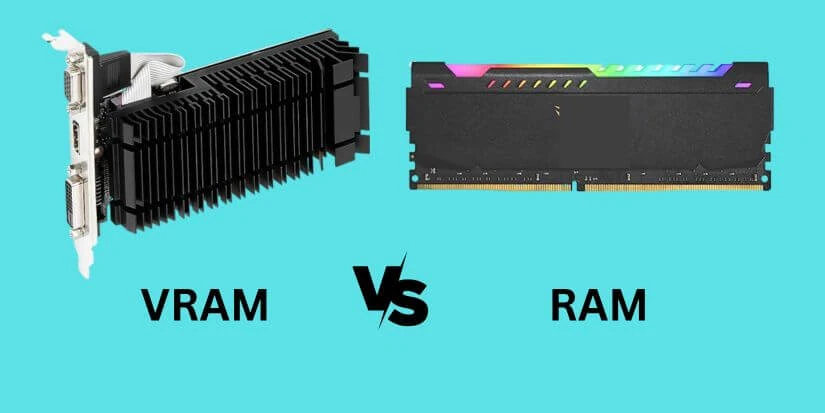
How do VRAM and RAM differ from each Other?
| Aspect | VRAM | RAM |
|---|---|---|
| What is it | Specialized memory for graphics-related data storage | General-purpose memory for overall system tasks |
| Function | Primarily used by the graphics processing unit (GPU) | Used by the entire computer system |
| Usage | Stores graphics-related information such as textures and 3D models | Stores data temporarily for running applications |
| Speed | Faster | Slower compared to VRAM |
| Data Storage | Graphics-related data storage | Temporary storage for running applications |
| Technologies | GDDR5, GDDR5X, HBM | DDR, DRAM, SRAM, RDRAM, SDRAM, VRAM |
| Types | WVRAM, SGRAM, MDRAM | DRAM, SRAM |
| Latest technology | GDDR6 | DDR5 |
| Upgradeability | Generally limited to graphics card specs | Can be upgraded for increased system performance |
| Availability | Prevalent in high-end desktops | Found in laptops, mobile devices, servers, and desktops |
| Importance for Gaming | Crucial for high-quality graphics and textures | Important for overall system performance and multitasking |
| Impact on Performance | Affects graphics rendering speed and quality | Affects overall system speed and responsiveness |
| Typical Capacity | Ranges from 2GB to 16GB (varies by graphics card) | Ranges from 4GB to 64GB (varies by system configuration) |
| Release Date | 1980s | 1940s |
VRAM (Video Random Access Memory): Imagine VRAM as a special memory in your computer’s graphics card. It’s like a dedicated assistant for your graphics card that helps it handle all the beautiful images, videos, and 3D graphics you see on your screen. VRAM is responsible for storing and managing all the graphical data needed to make things look stunning.
RAM (Random Access Memory): RAM is like the computer’s short-term memory. It helps the Central Processing Unit of your computer, called the CPU, to quickly access and use data while it’s working on tasks. RAM is like a handy workspace where the CPU keeps things it needs to work on right away.
Location: VRAM has its own special place on the graphics card, away from the rest of the computer’s main memory. On the other hand, regular RAM sits on the motherboard and is shared by all the parts of the computer, including the CPU.
Speed: When it comes to speed, VRAM is super fast! It’s designed to handle all the fancy graphics your computer displays in real-time, like games and videos. On the other hand, while regular RAM is also quick, it’s not as fast as VRAM because it doesn’t need to deal with as much visual stuff.
Usage: VRAM is like an artist’s palette. It’s mainly used for creating and showing all the beautiful images and animations you see on your screen. It holds things like colors, textures, and special effects. On the other hand, regular RAM is like the CPU’s personal assistant. It helps run all the applications and keeps important data close by so the CPU can access it quickly.
Access and Control: The graphics card, which is in charge of handling visuals, has direct access and control over VRAM. It can quickly fetch and change the graphical data stored there. Regular RAM, on the other hand, is accessible by the CPU and other parts of the computer. It’s like a shared space where everyone can access the data they need.
Capacity and Type:
VRAM (video RAM) comes in different capacities, such as 2GB, 4GB, or even larger, depending on the graphics card. More powerful graphics cards designed for gaming often have more VRAM. The type of VRAM, such as GDDR5 or GDDR6, affects the speed and bandwidth.
Regular RAM (system memory) also comes in varying capacities depending on the computer configuration. It has different generations, including DDR3, DDR4, and DDR5. Each new generation offers improved performance and higher transfer rates.
Also Read: SSD vs HDD: What’s the Difference?
Is VRAM Better Than RAM?
They are not necessarily better or worse than each other. VRAM and RAM are complementary and both essential for optimal computer performance. Having sufficient capacities of both VRAM and RAM ensures smooth gaming, multimedia, and day-to-day computing experiences.
How Do I Check VRAM?
you can follow these steps:
Windows (Using Display Settings):
Step 1: Right-click on the desktop and select “Display settings” from the context menu.
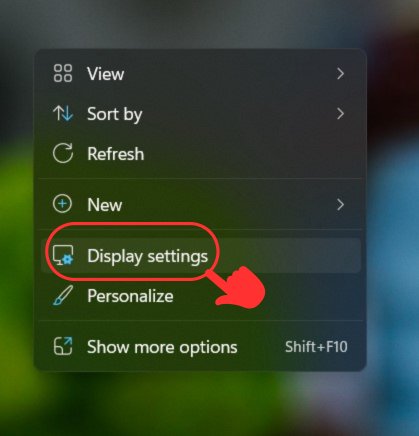
Step 2: Scroll down and click on “Advanced display settings.“
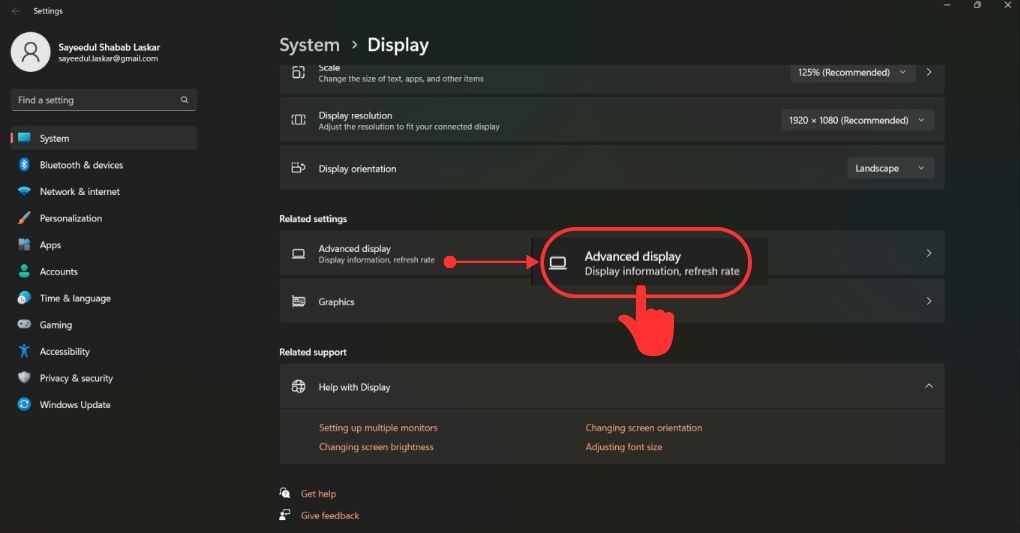
Step 3: Click on “Display adapter properties”
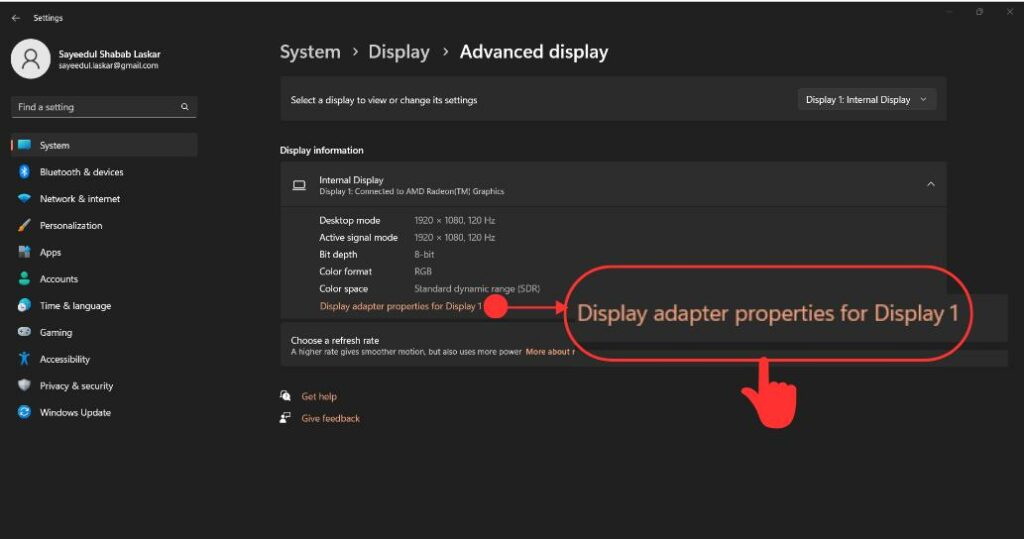
Step 4: Under the “Adapter” section, you’ll find the “Dedicated” or “Dedicated video memory” value, which indicates the amount of VRAM your system’s graphics card has.
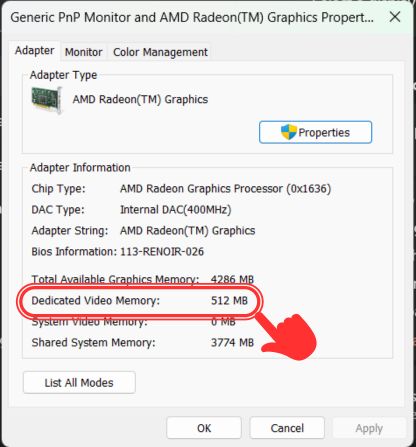
Windows (Using DirectX Diagnostic Tool):
Step 1: Press the Windows key + R to open the Run dialog box.
Step 2: Type “dxdiag” and press Enter to open the DirectX Diagnostic Tool.

Step 3: In the DirectX Diagnostic Tool window, go to the “Display” tab.
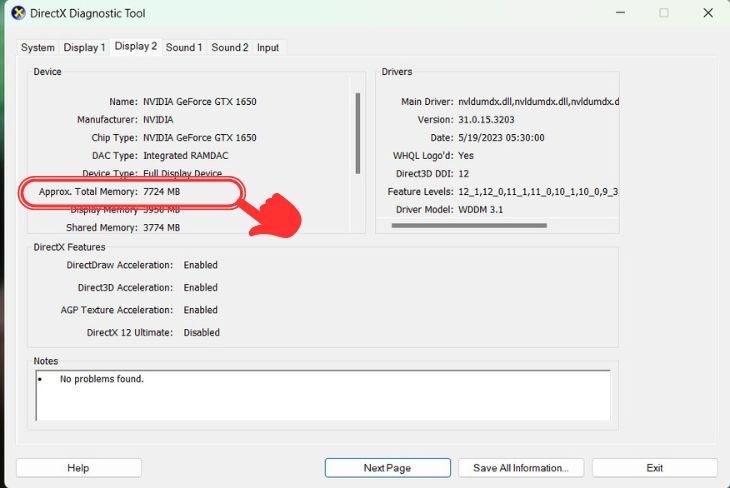
Step 4: Look for the “Approx. Total Memory” entry, which shows the total VRAM available on your graphics card.
macOS:
Click on the Apple logo in the top-left corner of the screen.
Select “About This Mac.”
In the window that appears, click on the “System Report” button.
Under the “Hardware” section in the left sidebar, click on “Graphics/Displays.”
On the right side, you will find information about your graphics card, including the VRAM amount.
Linux (Using Terminal):
Open a terminal window.
Use the following command to check the VRAM:
grep -i –color memory /var/log/Xorg.0.log
Look for the line that shows the amount of VRAM available.
How to increase VRAM?
Increasing VRAM is not as simple as adding more memory. It’s a fixed part of your graphics card. For better VRAM utilization:
- Integrated graphics: Allocate more regular memory if possible in settings.
- Update graphics drivers for improved VRAM management.
- Lower quality/resolution in graphics-intensive apps to conserve VRAM.
- Restart to clear VRAM cache, but upgrading your graphics card for more VRAM is the only permanent solution.
- Check compatibility before upgrading. More VRAM helps with large images/videos and complex graphics.
- Be cautious of tools promising artificial VRAM increase; they can harm your system. Rely on official sources for updates.
FAQs
How much VRAM do you need?
For regular stuff like browsing the web and using documents, 2GB to 4GB of VRAM is enough.
If you want to play games, the VRAM you need depends on the quality of the graphics and the resolution you want to play at:
1. – For standard HD gaming (1080p), 4GB to 6GB of VRAM is good for most games.
2. – For better quality at 2K resolution, you’ll need around 6GB to 8GB of VRAM.
3. – For playing games at super high 4K resolution, you should have 8GB or more VRAM.
4. – If you do things like video editing or 3D work, you might need even more VRAM, like 8GB or more.
Can VRAM be used as RAM?
VRAM and regular RAM serve distinct roles. VRAM handles graphics (images, videos), while regular RAM manages general tasks and program execution. They’re not interchangeable due to differing purposes. Both are essential for optimal graphics and overall computer performance.
Why is my VRAM so low?
If your VRAM (graphics memory) is low, possible reasons include:
1. Older or basic graphics card.
2. Using integrated graphics on a laptop or mobile.
3. Driver problems.
4. Hardware limitations.
How to increase VRAM?
Increasing VRAM is not always possible because it’s a dedicated memory on your graphics card.
Can I use RAM as a VRAM?
No, you cannot use regular RAM as VRAM. They are different types of memory with different purposes.
How much VRAM is needed to play a 1080p 60 fps game?
For 1080p game at 60 frames per second, you’ll need a graphics card with at least 4GB of VRAM If you want better graphics or play more demanding games, consider a graphics card with 6GB or 8GB of VRAM.
Final Words
VRAM is a special memory that makes graphics and videos look good. It became faster and better, making games and editing easier. But it has some drawbacks and expenses. In the future, VRAM will keep improving visuals, and creating more beautiful pictures and videos.
